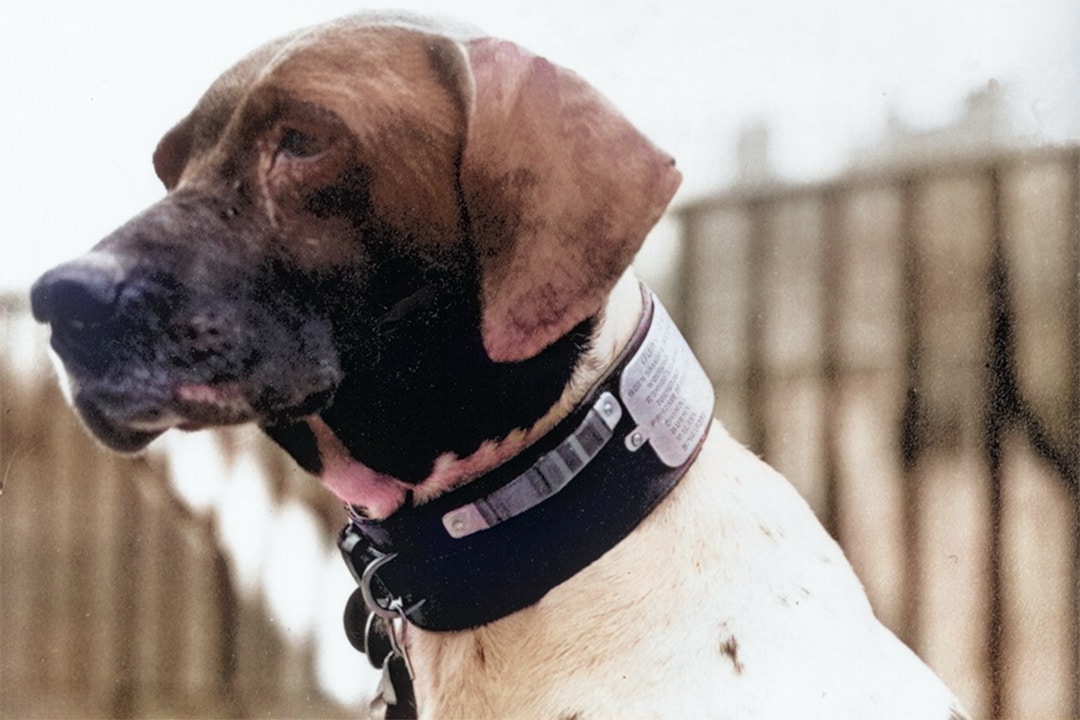Judy
1936 – 17th February 1950
There is so much confusion regarding the relationship between China, Japan and other countries in this pre war period that it would take a scholar to explain. So without going into the history in detail please be aware that at the very beginning of this story the relations between the UK and Japan were somewhat strained but war between Britain and Japan didn’t start until December 8th 1941, further more at this time there was a large Japanese military presence in China.
Hell Ship. A particularly barbaric means of transporting prisoners with little food or water, cramped conditions with and no toilet facilities leading to the death of many. It is also estimated that at least 20,000 allied prisoners of war were killed when these ships were attacked by allied vessels.
Judy was a pedigree, liver and white English pointer dog with an extraordinary history that almost defies belief. It included being a seasick ship’s mascot, falling overboard, dognapped, shipwrecked TWICE, being shot, being trapped in a sinking ship, being sentenced to death TWICE, surviving being dropped through a porthole of a sinking ship, trekking for 5 weeks through the jungle, survived a crocodile attack, saved many lives and lived four years in a brutal Japanese prisoner of war camp. She was the only dog in World War11 that was registered as a bona fide prisoner of war.
Incredibly, these are only just the highlights!!
A ship’s mascot
It all started in 1936 when the crew of the gunboat HMS Gnat stationed in Shanghai, China, voted to obtain a dog as a mascot. One was obtained from the Shanghai Dog Kennels. Her original name was Shudi, but she had been anglicised to Judy.
The official title of “Keeper of the Ship’s Dog” was given to the ship’s butcher, Jan ‘Tankey’ Cooper, who provided a box and blanket as a bed. Her earliest known escapade was falling overboard while they were navigating the Yangtze River. Fortunately, she was spotted and rescued, and the incident was recorded in the ship’s log as a “man overboard” exercise.
In an early incident, the crew of the American Ship USS Panay held a party for their British allies, and shortly afterwards, it was noticed that Judy was missing. The British sent a message asking if the Americans had information regarding the missing canine, but they denied all knowledge. Having established that their dog had been “dognapped,” the Brits secretly boarded the USS Panay and stole the ship’s bell. This was offered in exchange for the return of their mascot, and Judy was returned within the hour.
There is a story about the crew’s attachment to Judy. When two sailors walk ashore, they are confronted by a Japanese soldier who points a rifle at Judy. One of the sailors, leading seaman Jack Law, takes great exception to this and promptly throws the offending Japanese soldier unceremoniously into the Yangtze River. Of course, this did nothing to improve Anglo-Japanese relations and, unfortunately, ended Judy’s regular walkabout.
Wartime adventures
In June 1939, some of the crew of HMS Gnat were transferred to HMS Grasshopper, including Judy, and following the British declaration of war on Germany, the Grasshopper was redeployed to Singapore. On the journey, it was discovered that Judy was, in fact, seasick, rather embarrassing for a ship’s mascot; however, our intrepid canine soon found her sea legs and the failure was swiftly forgotten. The initial period was fairly uneventful, but when the battle of Singapore took place (February 8 – 15, 1942), HMS Grasshopper was sent to sea to provide anti-aircraft fire. Following that, the order was given to evacuate personnel and leave Singapore. By this time, Judy was able to hear incoming Japanese aircraft long before the crew, giving them time to man the guns and shoot down some planes
On route the ship was bombed, the order to abandon ship was given and the survivors managed to reach shore on an island, however, Judy was reported to be missing in action.
Petty Officer George White returned to the sinking ship to retrieve any supplies he could find as the island was uninhabited and appeared short of food and had no fresh water. He discovered Judy trapped by falling furniture, freed her, and returned to the island, whereupon Judy dug down and discovered water, which probably saved the lives of the crew. They were eventually rescued and embarked on a 200-mile (320-kilometre) trek through the jungle, where Judy was attacked by a crocodile. She suffered a 6-inch wound (15 centimetres), and the men used their dwindling medical supplies to give rudimentary treatment while Judy continued to warn them of predators and impending danger. Having completed their epic trek, the survivors of HMS Grasshopper, including Judy, were taken prisoner and would spend nearly four years in captivity, enduring some of the worst treatment endured by prisoners in Japanese camps.
During this period, Judy met Leading aircraftman Frank Williams, who shared his meagre bowl of rice with her. After the guards threatened to shoot Judy because she growled at them, it was Williams who persuaded the camp commandant when he was drunk to register Judy as a bona fide prisoner of war. Her POW number was 81A Gloegloer Medan.
During her stay, she alerted the prisoners to the guards’ approach and the presence of scorpions and snakes. Judy would sometimes disappear into the jungle and bring rats and snakes to Frank, and there is evidence that the prisoners actually ate some of these, such was the shortage of food.
Prisoner transfer
In June 1944, the men were transferred to Singapore by the “hell ship” Harugiku Maru, and with dogs not being allowed, Judy had been trained to lay quietly in a rice sack, and this she did until the ship was torpedoed. In an attempt to save her life, Frank then pushed Judy through a porthole despite the drop being approximately 15 feet (4.6 metres). Sadly, 500 prisoners were killed.
Frank Williams lived and was sent to a new camp without knowing if Judy had survived. Stories began to emerge of a dog that swam around, providing pieces of flotsam for the men to cling to. The number of people who owe their lives to Judy in this incident will never be known. Some of the survivors rescued her, brought them ashore, and hidden, but she was spotted by a Japanese Captain who decided Judy could not continue to the new camp and must be shot. Fortunately, this order was overturned by a senior officer, and eventually, she was taken to the new camp and was reunited with Frank. It was observed that Judy was no longer the tame pet she had been in the past. Her experiences had hardened her; she was more aggressive towards the guards, and Frank had to send her into the jungle to avoid retribution from the Japanese. On one occasion, she was shot and wounded, but without any medical treatment available, all Frank could do was place palm fronds over the wound and let time do the rest. Towards the end of the war, in a vain attempt to control flea and lice outbreaks, the Japanese decided that Judy must be shot, so she was sent into the jungle and only reappeared when the guards left. Finally, with the war coming to an end, the Japanese abandoned the camp, and the ordeal of the prisoners and Judy was nearly over. Judy was smuggled onto a troop ship and finally arrived in the UK, only to have to spend 6 months in quarantine. Frank could not pay the fee but it was raised by public subscription. During her stay in quarantine, she was visited regularly by Frank and other ex-servicemen. She was released from quarantine on the 29 April 1946 and returned to Frank.
Awards
She had served for ten years. If any dog earned medals and retirement, it was Judy.
She was awarded the Dickin Medal, Pacific Star, Defence Medal and the 1939-1945 Star.
She spent the rest of her life with Frank and finally developed a mammary tumour, which was removed, but with tetanus setting in, she was euthanized on 17 February 1950, aged 14. She was dressed in her jacket along with three of her medals and laid to rest. She lies in Tanzania where Frank had taken a job working for the British government.
Her grave is marked with a plaque. It reads: In memory of Judy DM canine VC.
In 2006, Frank Williams’ son donated her collar and Dickin Medal to the Imperial War Museum, where they are displayed at the Animals War exhibition.
Judy’s full story also available in print
“For magnificent courage and endurance in Japanese prison camps which helped moral among her fellow prisoners and saving many lives through her intelligence and watchfulness.”
Judy’s Dickin Medal citation







